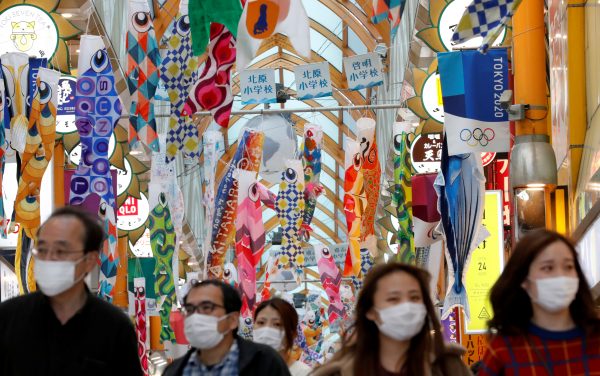Given its slow response, it is worth looking back at Japan’s gradual policy evolution since January. At first glance, the shadow of the Olympics dominates the story of Japan’s COVID-19 policy. Japan’s initially low COVID-19 case numbers might be attributed to its low rate of tests, and numerous commentators suggest that this was driven by a desire to push forward with the Tokyo 2020 Olympics. The question of the Olympics was not simply a matter of political prestige and election promises. At its heart lay an enduring concern for Japan’s stagnant economy, which was poised to embrace the stimulus of this global sporting event.
Yet political calculations associated with the Tokyo 2020 Olympics were not the only variable to slow the wheels of crisis management. The machinery of governance, set in its bureaucratic ways, should also shoulder some of the blame for the low rate of testing. Hiroaki Richard Watanabe argues that Japan’s bureaucratic structures emphasised policy recommendations from expert meetings under the Ministry of Health, Labour and Welfare (MHLW) which limited expert input from other areas. As a result, the National Institute of Infectious Diseases (NIID) — in charge of monitoring COVID-19 infections — focused on cluster targeting through high-quality testing and epidemiological surveys, rather than adopting a rapid, mass-testing regime like in South Korea.
Looking back at Japan’s initially reported case numbers, it is likely that both the government and the public were lulled into a false sense of security. Japan seemed to emphasise its culture as a distance-embracing nation — characterised by bowing, muted shows of affection, and its habit of donning surgical masks at the slightest sign of the flu. Cultural factors are difficult to measure and bear a mention, particularly since the perks of Asia’s surgical mask habits have already gained international approval. But the context of Japan’s stark ageing population problems as a vulnerability to the virus outbreak should not be ignored.
The prominence of isolated families in Japan, Maxim Krylov argues, may help to mitigate the risk posed to Japan’s ageing population. The young infrequently visit their elders. The younger generation are also increasingly putting off dating and marriage. This make Japanese families distinctly less close-knit than many of their regional counterparts. Nuclear and single households are on the rise and extended family gatherings occur infrequently. This is in stark contrast, for instance, to South Korea’s strong emphasis on family and community gatherings, which contributed to several cluster cases of the virus. When combined with an increasingly large gap between the industrialised city centres and the rural towns — where most of the elderly tend to be concentrated — this divide may help lessen the risk of COVID-19 transmission from asymptomatic youths to high-risk elderly populations.
But Japan’s recent growth in COVID-19 cases demonstrates the limits of cultural factors — even when combined with mild government restrictions on museums, amusement and theatres.
A critical juncture occurred during the final week of March. The official postponement of the Olympics was followed by government warnings that a lockdown may be imminent. The celebration of one of Japan’s most iconic seasonal activities, hanami (cherry blossom viewing), also seemed to play a part in illustrating the limits of citizens’ self-restraint.
Hanami events have grown into a robust source of seasonal tourism and business nationwide and bring together multi-generational crowds of locals and tourists. Yet once reports of hanami crowds hit the press it became difficult for the government to continue putting off an official state of emergency declaration, particularly as COVID-19 cases exploded in Tokyo.
Now that concerns about the Olympics and hanami are out of the picture and a nationwide state of emergency has been declared, it is hoped that Japanese leaders may gradually bend to increasing pressure from international and domestic voices calling for a tougher response. As Japan continues to grapple with the pandemic, it remains critical to watch the variables shaping the Abe government’s policy amid continued calls for faster testing and the enforcement of a full lockdown.
Kate Kalinova is a project officer at the Australian Chamber of Commerce (AustCham) in Korea and a volunteer for Young Australians in International Affairs.
This article is part of an EAF special feature series on the novel coronavirus crisis and its impact.

